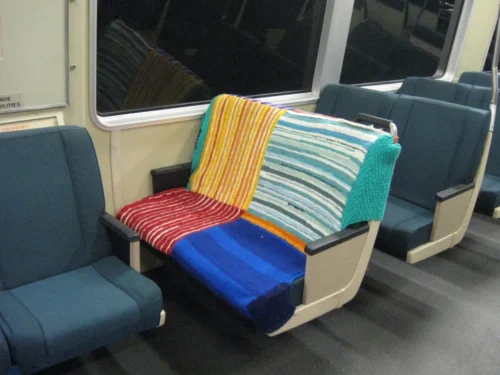
Here’s a fascinating story told in 2019 from way back in the day about an obvious Bay Area criminal conspiracy and how it was investigated.
Several people were paid a small fee to quickly slash train seats with a knife using a specific pattern, a signature if you will. The brand new seats, instead of being patched quickly and cheaply, were removed and re-upholstered, generating a huge source of overtime pay for train workers and boosting material orders from suppliers.
In January 1981, another jump in the number of vandalized seats caused BART to once again extend and increase its contract with Service Systems, this time for $75,000, or $221,170 today. (The San Francisco Examiner estimated the contract amounts to be even higher — $100,000 in 1980, and $175,000 in 1981.) The slashes were always the same, however. One slash on the back of the seat, with another slash in the front. … It was estimated that “possibly 85 percent of the more than 7,000 BART train cushions damaged since August 1979” was the work of this company, the Examiner reported at the time. All said and done, BART had paid the company $115,000 for the repairs, a total of about $339,128 in today’s money.
That “always the same” slash helped the conspiracy identify which seat damage would reward their slashers. Of course such a signature move also should have helped stop the slashing of thousands of seats; years were wasted before it was finally investigated and ended in 1981.
Related: In 2017 BART quickly replaced its many fake cameras with real ones.
After an investigation by the San Francisco Chronicle revealed that, harrowingly, more than two thirds of the cameras on BART trains were fake, the Bay Area transit agency has reportedly replaced those bogus cameras with real ones.
Lawsuits related to personal property theft during mob attacks prompted the sudden change.